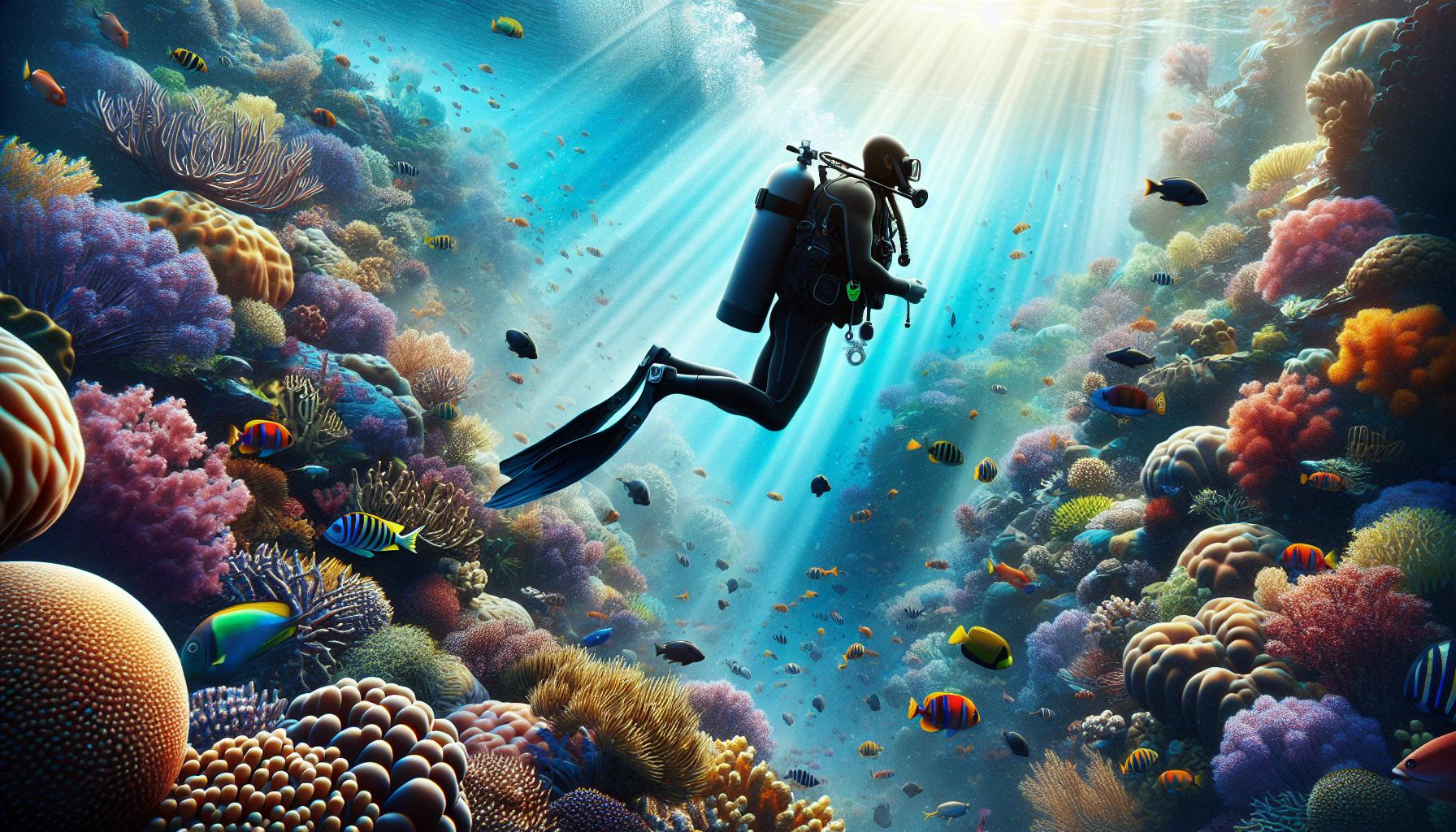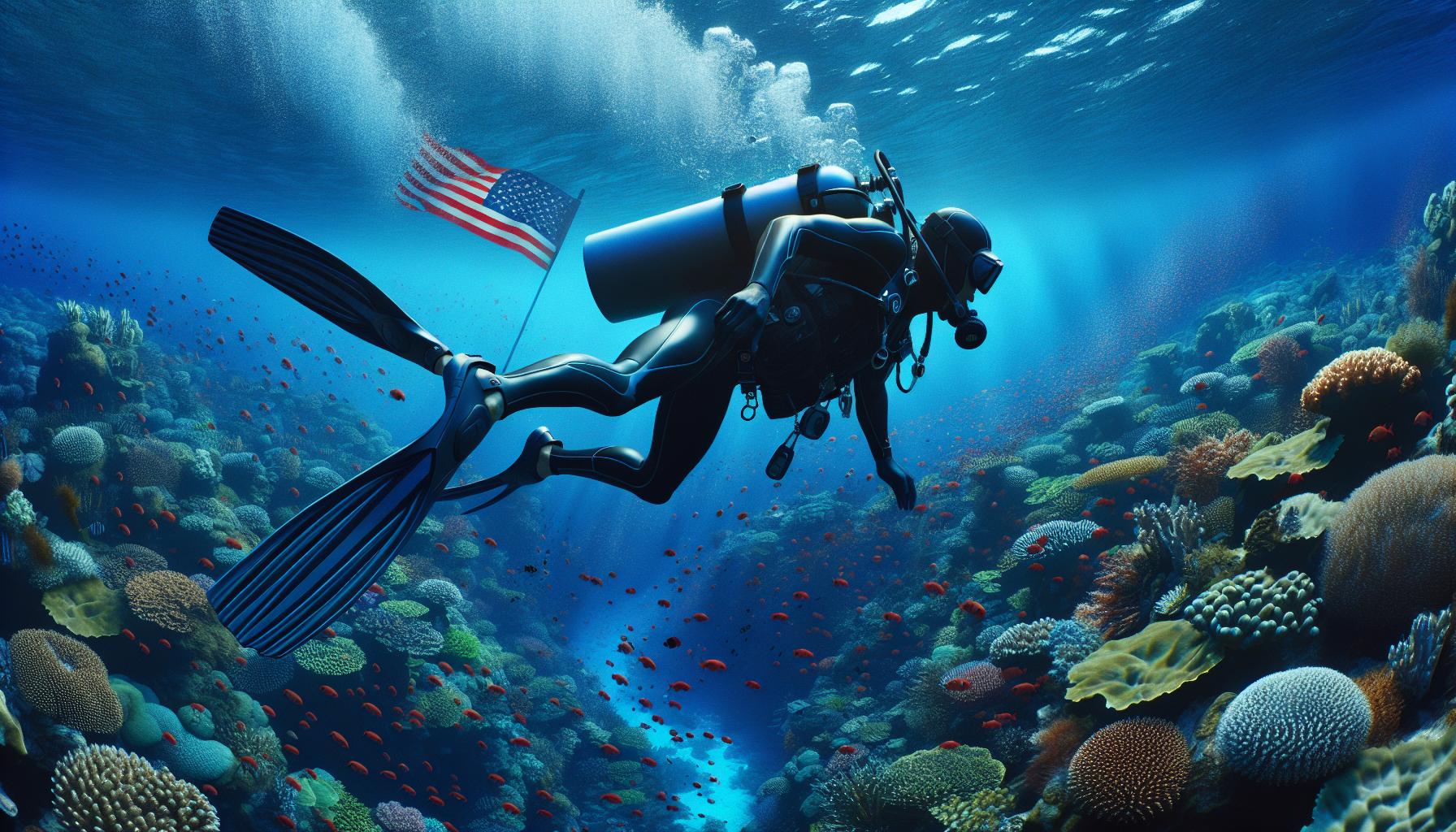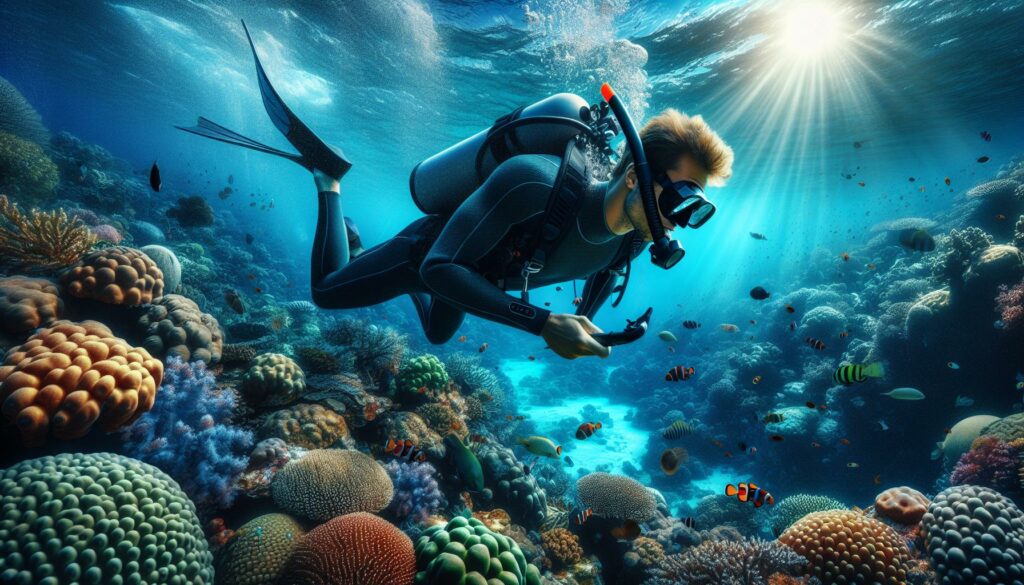Diving the Great Barrier Reef is like stepping into a vibrant underwater paradise. As I glide through the crystal-clear waters, I’m surrounded by a kaleidoscope of marine life, from playful clownfish to majestic sea turtles. This UNESCO World Heritage site isn’t just the largest coral reef system in the world; it’s a breathtaking experience that leaves every diver in awe.
The reef stretches over 1,400 miles along Australia’s coast, offering countless dive sites that cater to all skill levels. Whether you’re a seasoned diver or a curious beginner, the Great Barrier Reef promises adventure and discovery at every turn. Join me as we explore the wonders beneath the surface and uncover why this iconic destination is a must-visit for anyone passionate about the ocean.
Key Takeaways
- The Great Barrier Reef is a UNESCO World Heritage site, spanning over 1,400 miles along Australia’s northeast coast, offering diverse marine ecosystems and vibrant underwater life.
- It caters to all skill levels with varied dive sites, such as Agincourt Reef, Cod Hole, and Osprey Reef, providing unique experiences from colorful coral gardens to thrilling shark encounters.
- The best times to dive are from June to November during the dry season when visibility can exceed 90 feet, making for optimal conditions and abundant marine life sightings.
- Essential diving gear includes a wetsuit, fins, mask, snorkel, and dive computer; safety is enhanced by renting from reputable suppliers and diving with certified operators.
- Marine life is rich and varied, including over 1,500 species of fish, numerous coral types, sea turtles, rays, and sharks, all contributing to the reef’s ecological significance.
- Prioritize safety by adhering to established diving practices, always diving with a buddy, and conducting thorough site briefings with experienced guides.
Diving the Great Barrier Reef
Diving the Great Barrier Reef presents an unforgettable adventure. This UNESCO World Heritage site spans over 1,400 miles along Australia’s northeast coast, showcasing a variety of marine ecosystems. Divers encounter vibrant coral formations, diverse fish species, and intriguing marine creatures like sea turtles, rays, and even sharks.
Diving sites range from shallow lagoons to deeper reefs, accommodating all skill levels. Popular spots include:
- Agincourt Reef: Renowned for its clear waters and colorful coral gardens.
- Cod Hole: Famous for friendly potato cod, offering an incredible interaction.
- Osprey Reef: Ideal for experienced divers, featuring dramatic drop-offs and sharks.
Dive operators provide necessary equipment and expert guidance. I recommend booking trips with certified companies for safety and knowledge. Engage in guided dives for a richer experience, ensuring identification of key species and understanding reef conservation.
Diving conditions vary throughout the year. The best time to dive is between June and November, during the dry season, when water visibility exceeds 90 feet. Regardless of when I dive, the Great Barrier Reef remains a spectacular underwater paradise that captivates divers from around the globe.
Best Diving Locations

The Great Barrier Reef offers a multitude of fantastic diving locations, each showcasing unique underwater experiences. Here are some top spots where divers can explore the reef’s wonders.
Coral Gardens
Coral Gardens present a breathtaking underwater landscape filled with a variety of coral species and vibrant marine life. Divers can marvel at soft and hard corals, often teeming with tropical fish. Some notable areas include:
- Agincourt Reef: Renowned for its crystal-clear waters and diverse coral formations, Agincourt Reef is perfect for divers of all skill levels.
- Ribbon Reefs: Characterized by its long, narrow reefs, this location offers stunning coral gardens and abundant wildlife, including schools of fish and sea turtles.
- Green Island: This easily accessible site features shallow waters where snorkelers and divers can explore vibrant coral systems right off the beach.
Wreck Sites
Wreck sites provide a unique opportunity to explore history submerged beneath the waves. They serve as artificial reefs, attracting diverse marine life. Key wrecks include:
- SS Yongala: This famous wreck lies off the coast of Ayr. Its abundant marine life, including sharks, rays, and giant trevally, makes it a sought-after dive site.
- HMAS Brisbane: A former Australian Navy destroyer, this wreck lies near Mooloolaba. It offers excellent conditions for experienced divers looking to explore its structure and the marine life around it.
- The Marie Louise: Located near Port Douglas, this wreck is accessible to novice divers, featuring colorful corals and tropical fish that call it home.
- Great Barrier Reef Marine Park: Covering a vast area, this park contains diverse habitats, from coral reefs to mangroves. It attracts a wide range of marine species.
- Cairns Marine Park: This park serves as a central hub for diving activities, featuring easy access to several popular sites and abundant marine life.
- Whitsunday Islands National Park: Known for its stunning landscapes, this area offers fantastic visibility and rich biodiversity, providing an incredible diving experience amid beautiful surroundings.
Marine Life Encountered

Diving in the Great Barrier Reef reveals a stunning array of marine life. The diverse ecosystems host myriad species, each contributing to the reef’s ecological richness.
Fish Species
Diverse fish species populate the Great Barrier Reef, creating vibrant underwater scenes. Commonly spotted fish include:
- Clownfish: Known for their bright orange coloring and association with sea anemones.
- Parrotfish: Recognized for their distinct beak-like mouths, perfect for grazing on coral.
- Snapper: Positioned as apex predators, they’re often seen in schools around reef drop-offs.
In total, over 1,500 species of fish inhabit the reef, showcasing variations in color, size, and behavior.
Coral Types
The Great Barrier Reef features various coral types, each possessing unique characteristics. The primary types include:
- Staghorn Coral: Known for its distinctive branching shape, this coral provides habitats for numerous fish species.
- Brain Coral: Identified by its maze-like structure, it plays a vital role in reef stabilization.
- Table Coral: Characterized by its flat, table-like appearance, ideal for supporting diverse marine life.
With over 400 coral species present, the reef forms a complex habitat that supports extensive biodiversity.
Other Wildlife
In addition to fish and coral, the reef hosts remarkable wildlife. Common encounters include:
- Sea Turtles: Frequently spotted gliding through the water, with species like the Green Turtle being the most common.
- Rays: Various types, including the majestic Manta Ray, often swim gracefully near the ocean floor.
- Sharks: Species such as the Whitetip Reef Shark are common, adding an element of excitement to dives.
This rich diversity showcases the Great Barrier Reef’s status as an essential ecosystem supporting marine life.
Diving Conditions and Safety

Diving the Great Barrier Reef offers exceptional experiences, but understanding diving conditions and safety measures is crucial. This ensures a safe and enjoyable adventure beneath the waves.
Best Time to Dive
The optimal time to dive is during the dry season, from June to November. This period boasts crystal-clear waters with visibility surpassing 90 feet. Water temperatures range from 70°F to 80°F, providing comfortable conditions for divers. During these months, marine life is abundant, making encounters with colorful fish and vibrant corals more likely.
Recommended Gear
Essential gear includes a wetsuit, fins, mask, and snorkel. A 3mm to 5mm wetsuit provides warmth and protection from marine life. Additionally, a dive computer tracks depth and time underwater, ensuring safety. Many divers prefer underwater cameras to capture the stunning scenery, while a dive knife can be a handy tool for emergencies. Always rent or buy equipment from reputable suppliers to guarantee safety and performance.
Safety Practices
Prioritize safety by diving with a certified and experienced operator. Follow guidelines for depth and time limits, adhering to recreational diving standards. Always check weather conditions before departure, as rough seas can pose risks. Engage in a thorough briefing with your dive guide to understand the dive site and discuss emergency protocols. Lastly, never dive alone; buddy systems enhance safety by providing support and assistance underwater.



